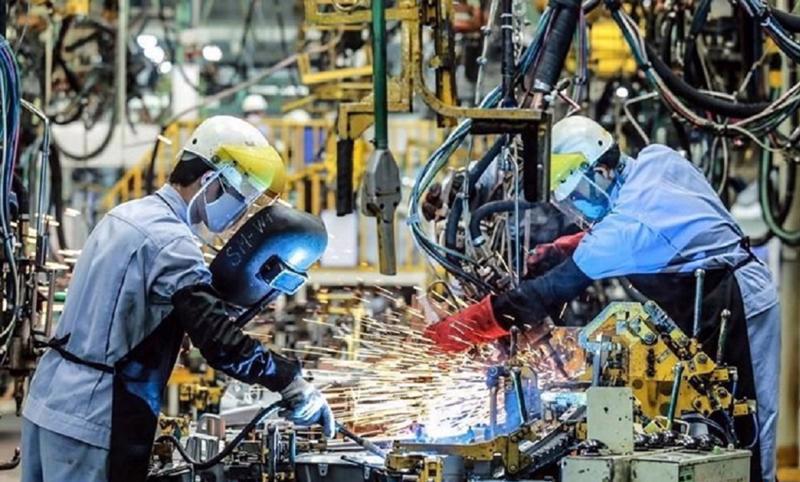Output growth quickens amid sustained rise in new orders: S&P Global
Manufacturing index in May unchaged at 50.3 points.

Growth was sustained in the Vietnamese manufacturing sector during May while new orders increased solidly again, prompting a faster expansion of production, according to a report of the S&P Global released on June 3.
Firms also increased their purchasing activity, but employment declined for the second month running amid resignations and extended staff absences.
Meanwhile, there was a marked acceleration in the rate of input cost inflation during the month. In turn, manufacturers raised their own selling prices for the first time since February.
The S&P Global Vietnam Manufacturing Purchasing Managers' Index™ (PMI®) was unchanged at 50.3 in May, signalling a second consecutive marginal monthly improvement in business conditions in the sector. The health of the sector has fluctuated only fractionally through the opening five months of 2024.
New orders increased solidly again in May as a strengthening demand environment helped firms to secure new customers and bring in new business. The rate of expansion was slightly softer than that seen in April, however.
Meanwhile, new export orders also increased, albeit to a lesser extent than total new business. The expansion of total new business encouraged manufacturers to raise their production volumes for the second month in a row. Moreover, the rate of growth quickened to the fastest since September 2022.
Despite the increases in new orders and output, manufacturers recorded a second successive monthly fall in employment midway through the second quarter. Anecdotal evidence suggested that employee resignations and extended absences had been behind the drop in workforce numbers, which was solid and the most pronounced for almost a year.
Despite the drop in staffing levels, firms were able to keep on top of workloads in May and reduced outstanding business following a marginal increase in the previous survey period.
While employment continued to fall, another expansion of purchasing activity was registered in May as firms responded to rising output requirements. The increase was the second in as many months, and more marked than in April.
Where companies purchased inputs during the month, they were faced with a sharp increase in prices. In fact, the rate of inflation quickened markedly and was the fastest since June 2022. A number of respondents indicated that currency weakness had added to material prices, while there were some reports of higher oil and fuel costs. Around one-quarter of respondents signalled an increase in input costs, against 5% that posted a decrease.
The sharp rise in input costs fed through to an increase in selling prices, the first in three months. The pace of charge inflation was the joint-steepest in 15 months, on a par with that seen in October 2023.
After having been unchanged in April, suppliers' delivery times lengthened marginally in May. Panellists linked delivery delays to goods shortages and difficulties caused by geopolitical issues.
Meanwhile, stocks of both purchases and finished goods continued to fall, with current sequences of depletion extended to nine and five months respectively.
Factory expansion plans, the launch of new products and the prospect of continued growth of new business all supported confidence in the year-ahead outlook for production. Sentiment was broadly unchanged from that seen in April, remaining below the series average to signal relatively muted optimism.
“The latest S&P Global Vietnam Manufacturing PMI data was something of a mixed bag. On the positive side of the ledger, new orders were up solidly again amid signs that demand growth is being sustained, prompting a sharper increase in production in May,” said Mr. Andrew Harker, Economics Director at S&P Global Market Intelligence.
"On the other hand, there are concerns around staffing levels and inflationary pressures. The former decreased again and at a solid pace, potentially limiting capacity at firms. Meanwhile, cost inflation was the fastest in close to two years, feeding through to higher output prices. This could have the effect of restricting demand in the months to come.”
"Overall, companies are optimistic regarding the future, with success in securing new business hopefully acting to overcome the headwinds being felt elsewhere."







